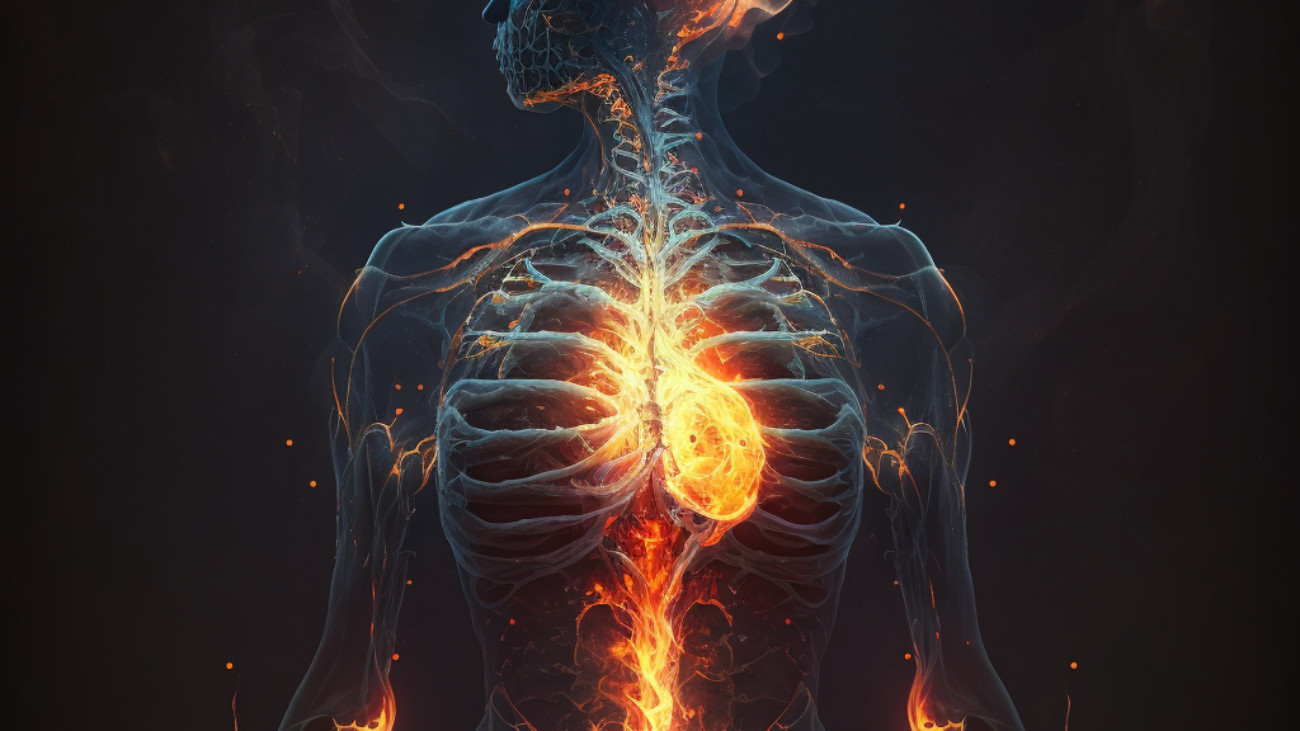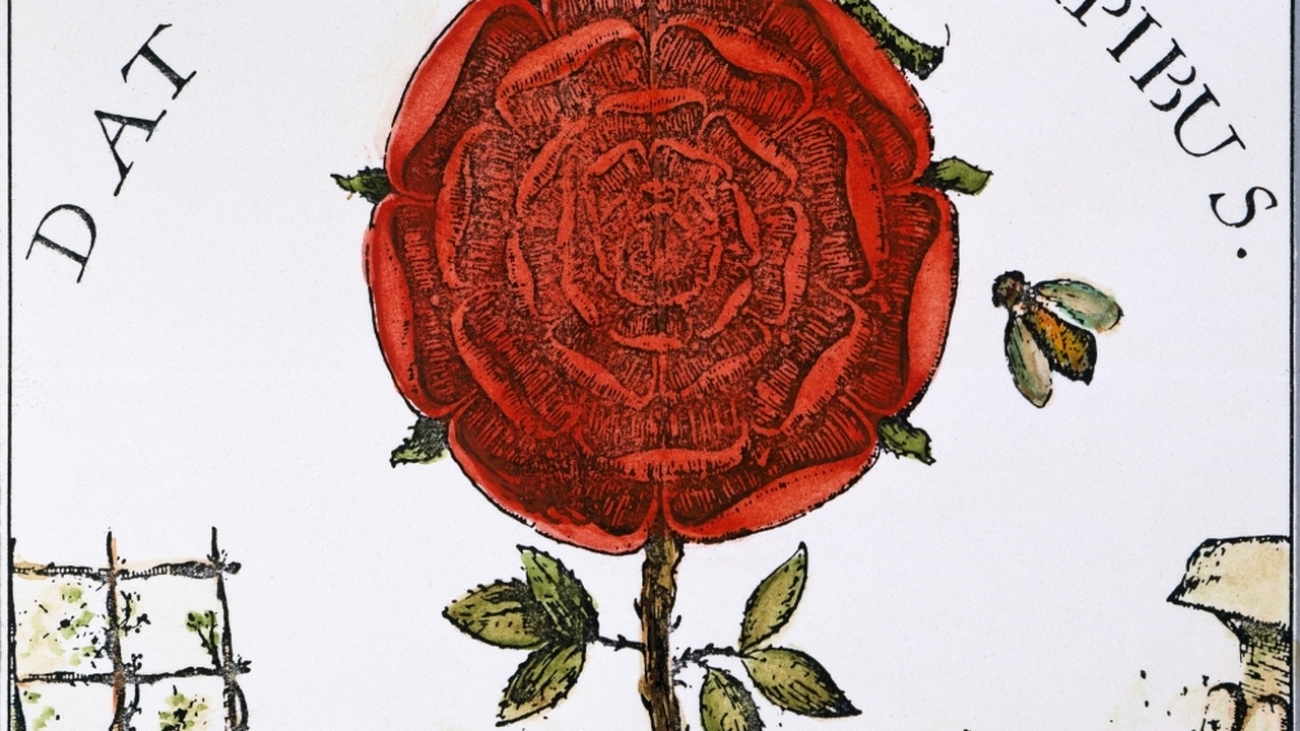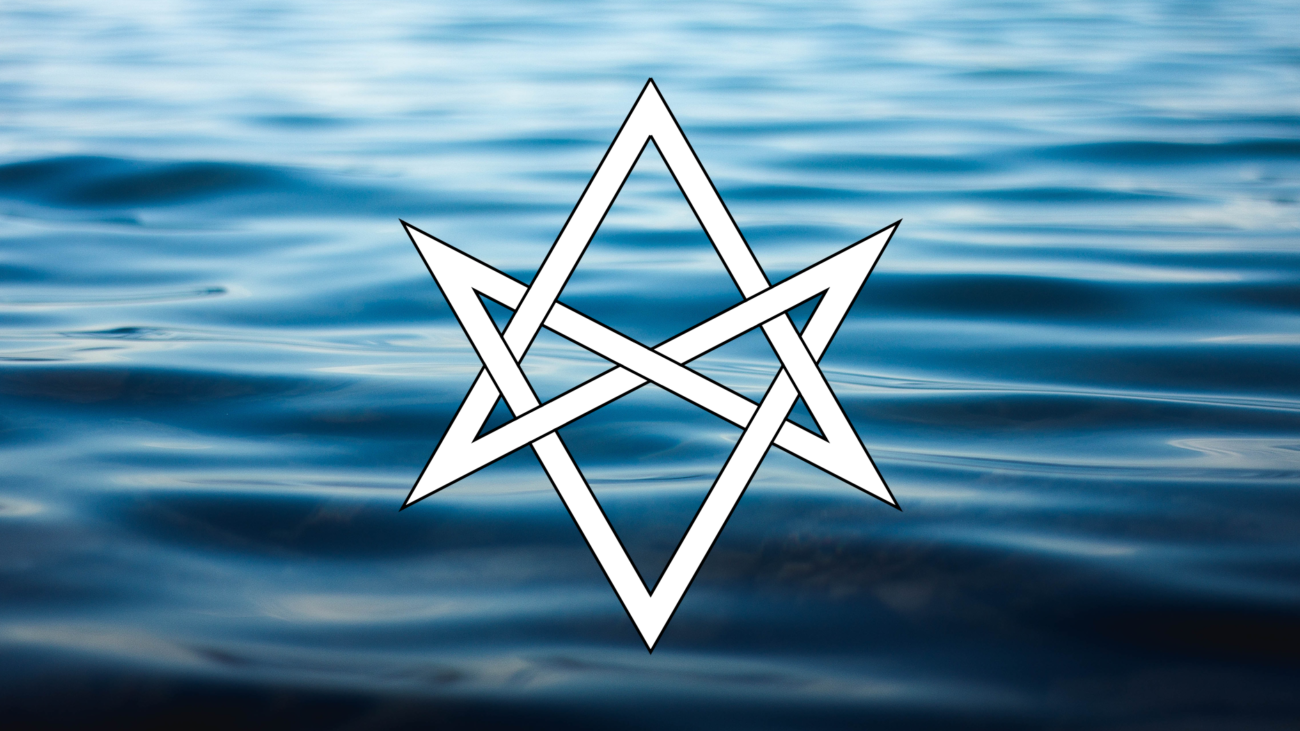In each situation, focus on walking a path of maximum integrity, conscious of your appointed orbit.
The Gift of the Mother
This is the exhortation I delivered at the conclusion of a Baptism I performed in Seattle on 7 Nov 2021.
The Cosmic Egg: Nuit, Hadit, and the Zero
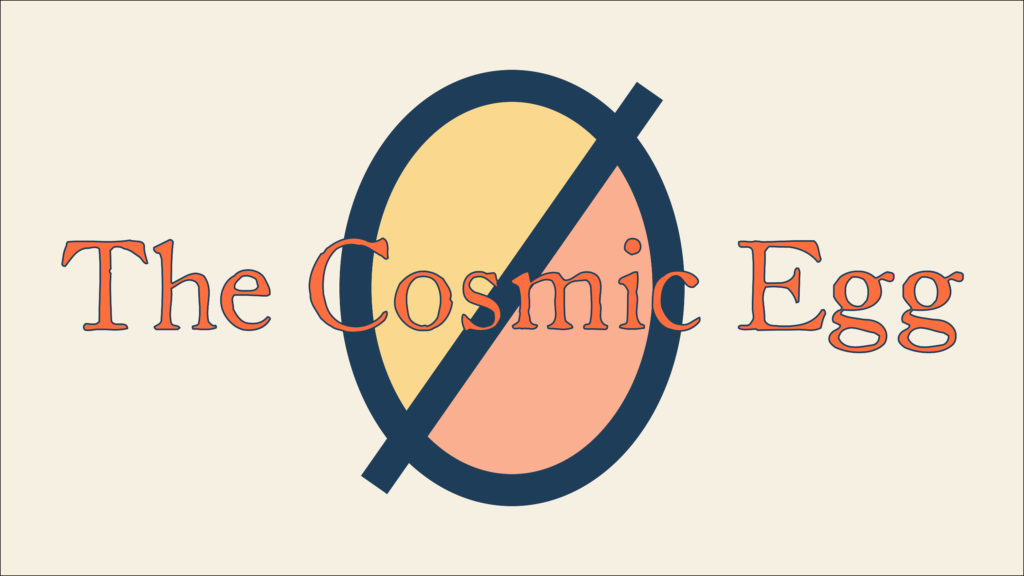
Part 3 of the Dualism, Monism & Thelema Series
Nuit and Hadit as Foundations
The Book of the Law presents Nuit and Hadit as the two exclusive deities of the Thelemic universe.
I am Heaven, and there is no other God than me, and my lord Hadit.
AL I.21
Furthermore Crowley took Nuit and Hadit to constitute the elements of the universe.
The elements are Nuit—Space—that is, the total of possibilities of every kind—and Hadit, any point which has experience of these possibilities. (This idea is for literary convenience symbolized by the Egyptian Goddess Nuit, a woman bending over like the Arch of the Night Sky. Hadit is symbolized as a Winged Globe at the heart of Nuit.)
“Introduction” to the Book of the Law
If Nuit and Hadit are both exclusive and elementary, then in our established terminology, they appear to be really distinct substances.
Forming a clear, distinct idea of space as distinct from the subjective point of view presents no difficulty. In fact they seem close in meaning to Descartes’s bodily substance and mental substance respectively.
This would appear to commit Crowley to mind-body dualism and make the Thelemic cosmology dualistic.
The Qabalistic Zero as Common Condition

Nuit and Hadit separating from the Cosmic Egg
However, in Crowley’s early essay, “Berashith,” he lays a framework for deriving Nuit and Hadit from an ontologically prior “nothingness”.
I assert the absoluteness of the Qabalistic Zero […] Our Cosmic Egg, then, from which the present universe arose, was Nothingness, extended in no categories
Crowley, “Berashith”
He then goes on to describe the creation of the universe in terms that anticipate the Thelemic cosmology of Magick in Theory and Practice chapter 0, where the infinitely great (Nuit) and the infinitely small (Hadit) combine to create Ra-Hoor-Khuit. (Magick, p. xxvii and p. 137. All references to Magick will be to the Weiser Second Edition, ed. by Hymenaeus Beta.)
So while there appears to be a real distinction between Nuit and Hadit, they share a common necessary condition in the Qabalistic Zero, which makes them modally distinct.
This implies that, while Thelemic cosmology initially appears dualistic, it is in fact monistic. All things are One (or “None,” as Crowley says) in the Qabalistic Zero.
But we need to make a distinction between two kinds of monism.
Identity Monism versus Dependence Monism

Identity monism entails a rational distinction
If two things are rationally distinct, then the difference is only in the concept we are applying to them. They are in fact one and the same thing. Let’s call this identity monism.
Crowley is not saying that the distinction between Hadit and Nuit is merely a rational distinction. Therefore we are not dealing here with a case of identity monism.
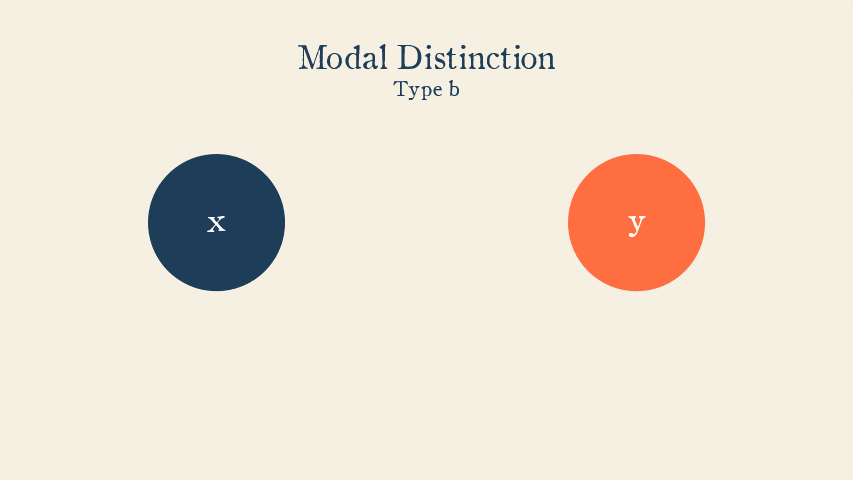
Dependence monism entails a type-b modal distinction
Instead, Crowley is implying that Hadit and Nuit are modally distinct: one is intelligible without the other, but they share a common third condition—the Qabalistic Zero—upon which they are mutually dependent.
So instead of calling this identity monism, I will follow Paul Franks and call this an instance of dependence monism. (Paul Frank, All or Nothing: Systematicity, Transcendental Arguments, and Skepticism in German Idealism, Harvard University Press, 2005.)
The implication is that, while Hadit and Nuit share a common condition in the Qabalistic Zero and hence are not really distinct substances, they are distinct modes of a single substance, and therefore the interaction between them is not illusory.
This is relevant to Crowley’s critique of “mystic monism” and its denial of the “interplay” of parts.
This is something the same as mystic monism, but the objection to that theory is that God has to create things which are all parts of himself, so that their interplay is false.
New Comment on AL I.3
In the context of this quote, Crowley is referring specifically to the interplay of Stars, but the point applies equally to the interplay of Nuit and Hadit.
Further, we can clarify his meaning of “mystic monism” in this passage. He is referring to what we are defining as identity monism, not necessarily all kinds of monism.
This is important, because it is only by committing himself to certain types of monism that other aspects of Thelema remain intelligible. This is especially true of its soteriology, which we saw previously requires the individual to transcend duality.
Is the Qabalistic Zero a Substance?
One might object to my line of reasoning thus far in the following way:
- A modal distinction between x and y assumes x and y are modes of a substance, z.
- A substance is a being.
- The Qabalistic Zero is defined as “Nothingness, extended in no categories,” i.e., the opposite of a being.
- Therefore, Nuit and Hadit cannot be considered modes of the Qabalistic Zero.
But for the purposes of our argument, we are defining substance as intelligible on its own terms. It’s defined without reference to existence.
The Qabalistic Zero is intelligible. This is evidenced in “Berashith” and later in Chapter 5 of Magick Without Tears, where Crowley provides a mathematical proof of the common origin of Nuit and Hadit in the Qabalistic Zero.
Not only that. He infers certain of their characteristics (like that Nuit is infinitely great and Hadit infinitely small). It’s impossible to make inferences from something if it’s unintelligible.
The particulars of the argument—which constitute the 0=2 theorem—need not preoccupy us. All we need understand is that Crowley treated the Qabalistic Zero as the intelligible, common ground of Nuit and Hadit.
Derivation Monism versus Dependence Monism
Since by Crowley’s lights the respective existences and qualities of Nuit and Hadit can be derived using logic and mathematics from their common condition, in addition to describing this as a form of dependence monism, I will again follow Franks and describe this as an example of derivation monism.
Not all examples of dependence monism are also examples of derivation monism. We might know that x is the necessary condition of y, and hence there exists a modal distinction between x and y, but it does not necessarily follow that we can know the particular qualities of y through examining x (or vice versa).
In other words we might identify x as the condition of the intelligibility of y without being able to explain or reduce all of the qualities of y to x.
For example, a triangle is a modification of shape, but it does not follow that we can deduce the sum of the interior angles of a triangle solely by means of an examination of the meaning of shape.
This distinction will be essential to make sense of Crowley’s thoughts about the Star.
To summarize:
- Hadit and Nuit are the dual foundations of Thelemic cosmology.
- Hadit and Nuit share a common condition in the Qabalistic Zero.
- So the distinction between Hadit and Nuit is modal, not rational. They are intelligible independently of one another but mutually depend upon the Qabalistic Zero. This is an example of dependence monism, not identity monism.
- Certain qualities of Nuit and Hadit can be derived from the Qabalistic Zero. This is an example of derivation monism.
- Not all instances of dependence monism are also instances of derivation monism.
Next we’ll look at how Nuit and Hadit are distinct from the Star.
Dualism, Monism, and Thelema
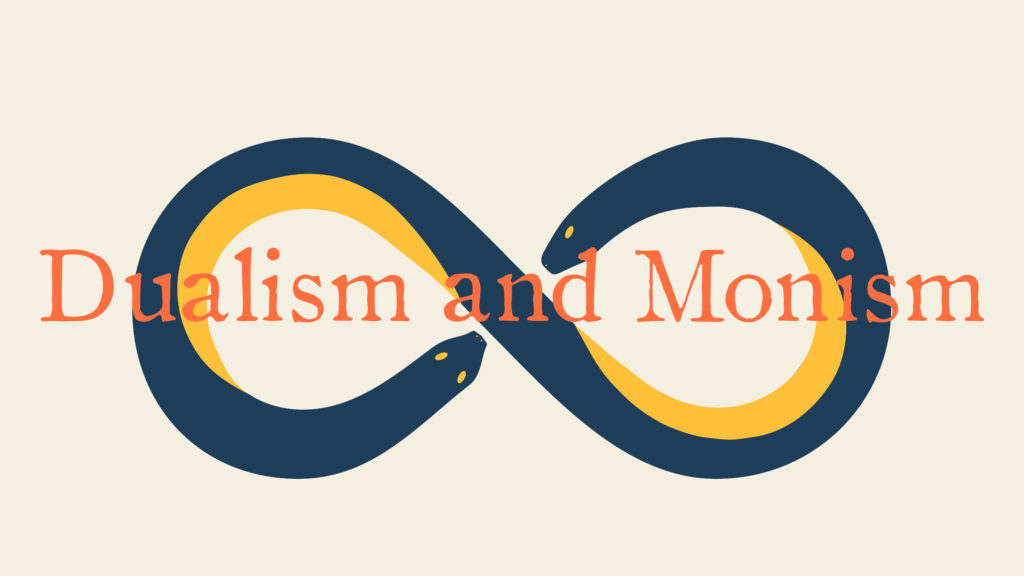
Part One: Introduction
Thelema includes both monistic and dualistic doctrines, and Crowley makes monistic and dualistic pronouncements throughout his writings.
For our purposes, monism will mean any theory or doctrine that in some sense denies the existence of a distinction or duality in some sphere, either in fact or in thought.
An example of one of Crowley’s monistic pronouncements can be found in Liber DXXXVI.
The Universe is one, omnipotent, omniscient, omnipresent. Its substance is homogeneous, and the substance cannot be said to possess the qualities of Being, Consciousness and Bliss, for these are rather the shadows of it, which are apprehended by the highly illuminated mind when it comes near thereto. Time and space themselves are but illusions which condition under veils.
Liber DXXXVI, Ch V, Sec 1
In general Crowley describes the Thelemic path of spiritual liberation in monistic terms, as a transcending of duality.
[…]Love is the enkindling in ecstacy of Two that will to become One. It is thus an Universal formula of High Magick. For see now how all things, being in sorrow caused by dividuality, must of necessity will Oneness as their medicine.Liber CL, Section II: Of Love
Dualism on the other hand shall mean any division of something—either in thought or in fact—into two opposed or contrasted aspects.
A prominent example of dualism in Thelema can be found in its foundational text, Liber AL vel Legis (AL).
I am Heaven, and there is no other God than me, and my lord Hadit.
AL I.21
This statement assumes there are two fundamental divine principles, not just one.
There are also numerous pluralistic statements throughout Crowley’s writings. For our purposes pluralism will mean any condition or system in which two or more states, groups, principles, sources of authority, etc., coexist. Any statement in support of pluralism, therefore, is by definition a statement in support of dualism.
Any of Crowley’s numerous statements in support of a multiplicity of unique, irreducible individuals is pluralistic (and hence dualistic) in the sense just described.
[E]ach ‘star’ is the Centre of the Universe to itself […] Therefore you have an infinite number of gods, individual and equal though diverse, each one supreme and utterly indestructible […] If we presuppose many elements, their interplay is natural. It is no objection to this theory to ask who made the elements—the elements are at least there; and God, when you look for him, is not there.New Comment on AL I.3
On the one hand, Thelema is unabashedly individualistic. Crowley defined the Thelemic Age—the New Æon of Horus—as one in which “the individual [is] the unit of society.” The individual requires no social, political, or religious contextualization but is instead absolutely self-justifying. “There is no god but man.”
On the other hand, the Thelemic understanding of the universe unambiguously denies duality, and the Thelemic path of liberation necessarily includes transcending the illusion of duality.
The purpose of this essay—which will be published in multiple parts—is to resolve these apparent contradictions by showing how Crowley incorporated dualistic and non-dualistic or monistic truths into a coherent account of the universe and the individual’s relationship to it.
I will begin by providing a conceptual framework for more precisely discussing monism and dualism. I will then apply that framework to four distinctions:
- The distinction between Nuit and Hadit.
- The distinction between Nuit, Hadit, and the Star.
- The distinction between the Khabs and the Khu of any Star.
- The distinction between Stars.
In each instance we will analyze the precise manner in which parts or individuals are related or separated, and which relationships might be considered monistic and in what way(s). This will help make sense of Crowley’s seemingly contradictory statements about monism and dualism by incorporating those statements into a coherent account.
Why a circular Tree of Life?
Reflections on the Path in Eternity (Part 4)

I came to magick via an unsual path: through my interest in the German philosopher Georg Wilhelm Friedrich Hegel.
Hegel was not a magician. He was a late-18th/early-19th century philosopher in the idealist tradition (a branch of thought taking influence from Descartes, Berkeley, and Hume, but which is usually seen as having its origin with the Prussian philosopher Immanuel Kant).
But it was after I had been interested in Hegel for over a decade that I read Glenn Magee’s book, Hegel and the Hermetic Tradition. (You can read the introduction of the book here for free. It actually provides a pretty good orientation for how Hermetism differs from Gnostism and traditional Christianity.)
Magee persuaded me that Hegel’s philosophy of Absolute Idealism owed at least as much to Renaissance Hermetism (or Hermeticism as it’s sometimes called) as it did to rational thinkers such as Hume or Kant.
Magee understands Hermetism as a broad spiritual current which has a theological basis in the Corpus Hermeticum but which also includes currents such as Qabalah, alchemy, and magic.
Pretty much everything we consider to be the western magical tradition has its origins in Renaissance Hermetism, in particular the synthesis given to it by Cornelius Agrippa. (Really the only component missing from Agrippa’s synthesis is the tarot.)
For more on this I highly recommend Frances Yates’s Giordano Bruno and the Hermetic Tradition. Certain aspects of her work are considered controversial now. I recommend reading Copenhaver, Hanegraaff, and Kingsley alongside her.
One of the main impacts Magee’s book had on me when I read it is that—oddly enough—it legitimized occultism for me.
Hegel was a philosopher I had spent over a decade studying both in and outside of academia. I considered a lot of my philosophical intuitions to be “Hegelian”. The experience was a little bit like having lived in a house for several years and then one day discovering a secret sub-basement that wasn’t on any of the building plans.
I was becoming familiar with the Qabalah right around the time I read Magee’s book (largely due to the work of my friend Daniel Ingram who also legitimized magick for me), so I recognized the Tree of Life in its usual top-to-bottom arrangement. But I was surprised to find out that there had been alternative arrangements of the sephiroth over time, including one in which they were presented as concentric circles.
For instance, Johann Jakob Brucker gave them a circular arrangement in volume 2 of his influential Historia Critica Philosophiae (1742).
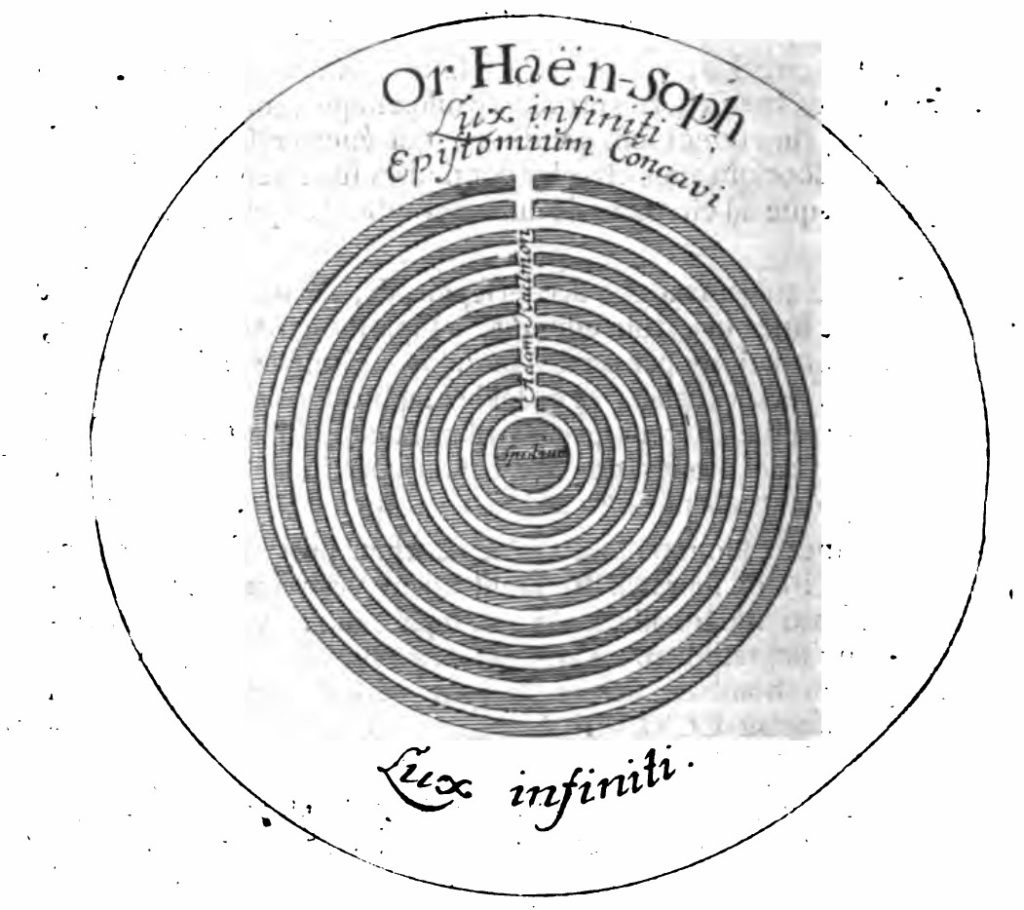
This diagram was Brucker’s attempt to illustrate a concept from the Lurianic tradition of Kabbalah, according to which each new act of creation or manifestation in the world is the result of a simultaneous contraction and expansion.
Isaac Luria and his followers envisioned the Ain Sof—the limitless infinity we previously identified with Nuit—as an infinite sphere in which a smaller sphere of empty space came into being through the tsimtsum, a primordial contraction or withdrawal of God.
It is into this empty space that God injects a ray of light which differentiates itself into the classical ten sephiroth. These were thought of as concentric circles of light filling the space within God created by the primordial contraction.
The first definite being that appears in the wake of the tsimtsum is Adam Kadmon (macroprosopus in the previous post). Adam Kadmon exists above the four worlds and mediates the light of Ain Sof into them.
Adam of the Bible—Adam Ha-Rishon—is an imperfect earthly embodiment of Adam Kadmon. While Adam Kadmon is spirit outside of space and time, Adam Ha-Rishon is spirit developing in nature, from the fall in the Garden of Eden and the loss of the immediate relationship to God, eventually to the recovery of that relationship in religion and mysticism (namely, Kabbalah).
(Ra-Hoor-Khuit is to Chaos as Adam Kadmon is to Adam Ha-Rishon.)
The implication of this concentric arrangement is that the material universe, individuals, and human history are not outside of the divine. Everything is in a certain sense “in” God. It’s just there in a corrupted or fallen state which has to be rectified over time.
This sense of us being in God, of directly participating in the divine all the time whether we know it or not, can be occulted by the traditional top-down arrangement of the sephiroth, where it looks as though Kether, Ain Sof, and Ain are somehow way above us mere earthlings.
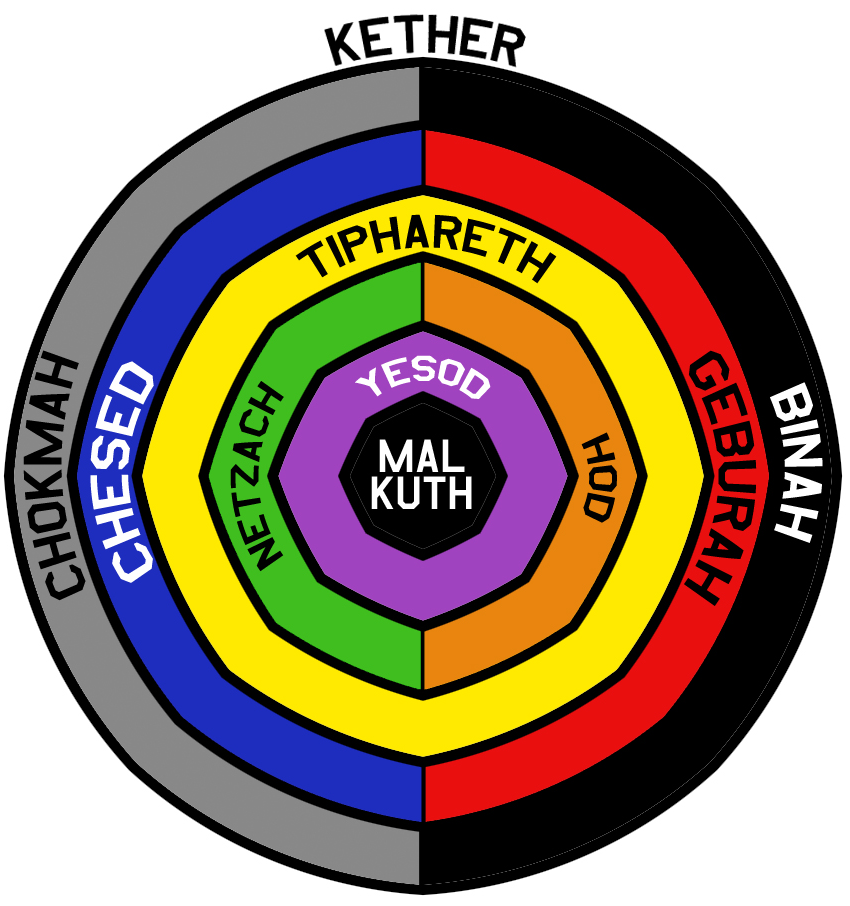
“A View from Kether” by IAO131
A few years later when I got into Thelema, I was pleased to see someone else had taken an interest in a similar arrangement. IAO131 created a diagram similar to Brucker’s in which Kether surrounds and contains the other sephiroth. My own version was inspired by his insofar as the sephiroth on the lateral pillars are depicted as semicircles rather than complete spheres.
What these concentric representations of the Tree of Life share in common is the implication that the reality we find ourselves in is one formed from an overarching, primordial, divine unity which divides itself.
There is some evidence in Crowley’s writings to support this view of our reality being the result of a self-division of God.
To know itself, each such Star, or Soul, must eat of the Fruit of the Tree of Knowledge of Good and Evil, by accepting labour and pain as its portion, and death as its doom. That is, it must reveal its nature to itself by formulating that nature as duality. It must express itself by a series of symbolic gestures ostensibly external to it, just as a painter reveals one facet of his Delight-Diamond by covering a canvas with colours in such a way that the picture seems at first sight to represent something outside himself. It must, in fact, repeat for itself the original Magick of Nuith and Hadith which created it.
New Comment on AL I.29 (emphasis mine)
AL I.29—of which this passage is a commentary—reads, “For I am divided for love’s sake, for the chance of union.”
We find in this passage echoes of the Lurianic idea of the fall as a temporary but necessary tragedy resulting from the diremption of an original, absolute whole (in this case the “Star, or Soul” of the individual).
The way to overcome this division is to repeat for ourselves the “original Magick of Nuith and Hadith” which created the star.
In this passage, Crowley presents the path toward liberation in artistic terms. The task is to see the world and the events in it, not as alien to our desires, but rather as vehicles for the manifestation of them. We are to view matter as (akin to) artistic medium.
The world loses its alien, painful character when it is understood and willed. When we can see the world as our own artistic creation, we have achieved liberation.
This is an interpretation of the Thelemic path of liberation I explored in my talk on the Magical Power of Art.
It was with something like this in mind that I formulated my own version of the concentric Tree of Life. However, unlike Brucker or IAO131, I reversed the order of the sephiroth. Rather than having Kether on the outside and Malkuth in the center, Malkuth is on the outside and Kether is in the center.
As it turns out, my reasons for doing this are numerous and complex. But before explaining any of them in detail, it’s worth mentioning that old adage that “the map is not the territory.”
I don’t believe sephiroth literally exist, let alone whether they are really, in any kind of metaphysical sense, related to one another externally or internally, or whether Malkuth can really be said to be at the center or not. That’s not really the point of a diagram.
In this context, the purpose of the diagram is to serve as a heuristic. It’s an attempt to convey some complex ideas in a simplified format that makes them easier to comprehend.
There could well be certain aspects of Thelema that are better captured by having Kether on the outside and Malkuth in the center, just as there are aspects that are better captured by the usual hierarchical (top-down) arrangement.
All of that being said, there are a lot of spiritual, metaphysical, theological, and soteriological assumptions packed into this simple decision to put Kether at the center and Malkuth on the outside.
Some of them require a lot of explanation and carry with them a lot of implications, so rather than go into any of them in depth right now, I’ll just list them succinctly.
- Repeat = Defeat. Let’s present something familiar in an unfamiliar format to discover new things about it.
- The journey is inward, out outward. Crowley described the work of A∴A∴ (in contrast with the work of O.T.O.) as a process of going inward toward the three supernal sephiroth. Without taking it too literally, that implies a certain spatial relationship. And since all the sephiroth are to be found “in” Malkuth, this links Thelema with what might be termed a chthonic counter-current in Western mysticism.
- The Khabs is in the Khu, not the Khu in the Khabs. Again, this implies a particular spatial relationship. This also implies that divine reality is not some original whole we were cut off from and have to get back to. This core spiritual idea sharply differentiates Thelema from Hegelian Idealism, Gnosticism, or even from Kabbalah. In Thelema the individual really is primary and irreducible in a way that you just don’t find in those other traditions.
- Thelema is about 2, not about 1. It’s all about the relationship between Hadit and Nuit. In order for there to be a love relationship between Hadit and Nuit, Nuit must be other than Hadit. That doesn’t work if Hadit and Nuit are merely parts of a primordial, original whole.
- It’s all about the going. Experience matters. Change is real. It is powerful, it is divine, and it is meaningful. The O.T.O. teaching on the Path in Eternity is as central to Thelema as are the teachings of A∴A∴ on the Holy Guardian Angel and the Abyss.
- It’s magick, not just mysticism. Going implies change, change implies magick, magick implies the Will. Willing implies traditionally masculine qualities such as mastery, overcoming, and expansiveness in addition to the feminine characteristics of dissolution and surrender that are particular to mysticism. Both sides are necessary for a complete understanding of Thelema.
I don’t know yet if I’m going to write posts about all of these. If there are particular ones you definitely want to hear about, though, let me know in a comment.
The Khu
Reflections on the Path in Eternity (Part 3)
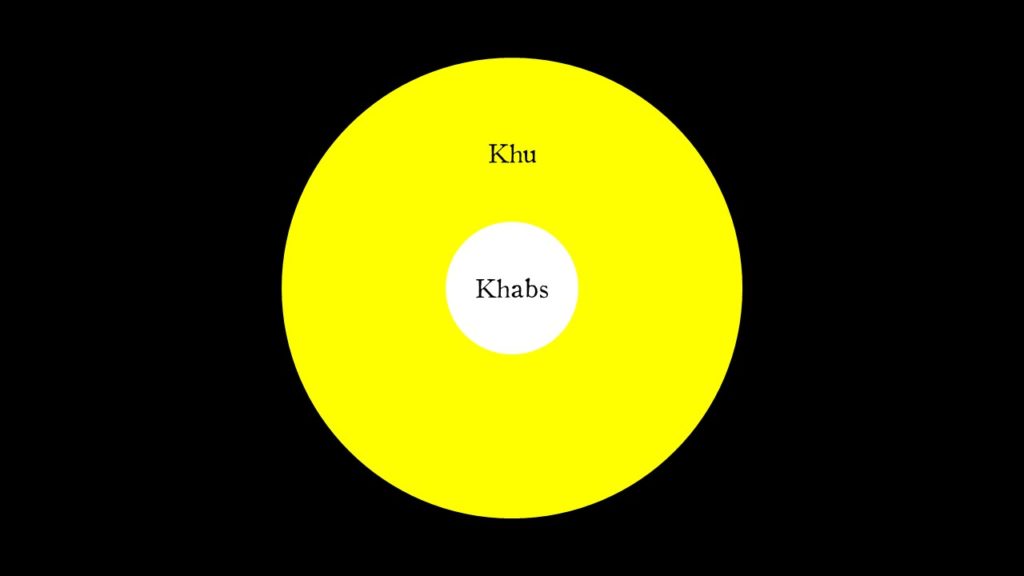
In the last post we saw that the star or soul of each individual is composed of two parts: the Khabs and the Khu. The Khabs is the manifestation of a distinct individual within the context of Nuit. The Khabs is the “house” of Hadit—your individual point of view—and as such it is the spiritual essence of who you are as an individual. We also saw that the Khabs is identical with the supernal triad on the Tree of Life, and as such it takes a triadic, reflective structure.
The Khu, on the other hand, is the “magical garment” of the star.
Khabs is the secret Light or L.V.X.; the Khu is the magical entity of a man […] This ‘star’ or ‘Inmost Light’ is the original, individual, eternal essence. The Khu is the magical garment which it weaves for itself, a ‘form’ for its Being Beyond Form, by use of which it can gain experience through self-consciousness
Old and New Comments on AL I.8
Each of us is Hadit, the core of our Khabs, our Star, one of the Company of Heaven; but this Khabs needs a Khu or Magical Image, in order to play its part in the Great Drama. This Khu, again, needs the proper costume, a suitable ‘body of flesh’, and this costume must be worthy of the Play.
New Comment on AL II.70
The Khabs represents the essence of who each of us is. It is possessed of the attributes of light, originality, individuality, and immortality. The Khu on the other hand is the mode by which the Khabs interacts with Nuit. If the Khabs is monistic (completely self-sufficient), the Khu is relational. It doesn’t exist without the interaction between the Khabs and Nuit.
And for that matter, the relationship between Khabs (or Hadit) and Nuit does not exist without the Khu. In other words, experience or embodiment of some kind is the necessary condition of the love “play” between Nuit and Hadit.
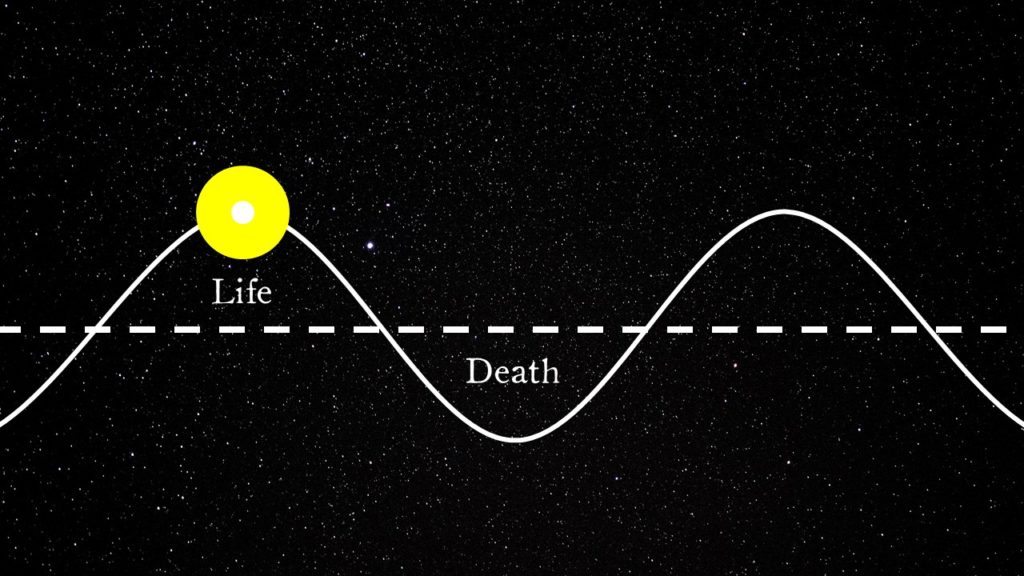
One answer to the question “Why do we incarnate?” is that incarnation (whether on this plane or some other) is a necessary precondition for Hadit’s going. In a subsequent post we can look at what some of the consequences of that are.
Unlike the Khabs of an individual which cannot be seen (arguably not even by the individual whose Khabs it is), since the Khu is relational, it is also manifest and can be seen either by the individual whose Khu it is or by others.
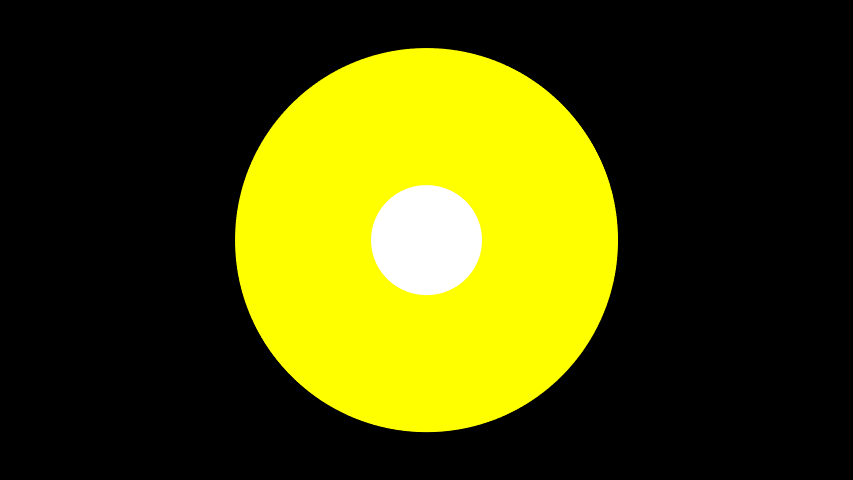
Also, since the Khu is a function of the interaction between the Khabs and Nuit, it is experiential and elastic. It grows and shrinks and changes in complexity in accordance with how much and what kind of experiences of Nuit one chooses to have.
“Every man and every woman is a star,” that is, an aggregate of such experiences, constantly changing with each fresh event, which affects him or her either consciously or subconsciously.
“Introduction” to the Book of the Law
the more complex the Khu of the Star, the greater the man, and the keener his sense of his need to achieve it.
New Comment on AL II.74
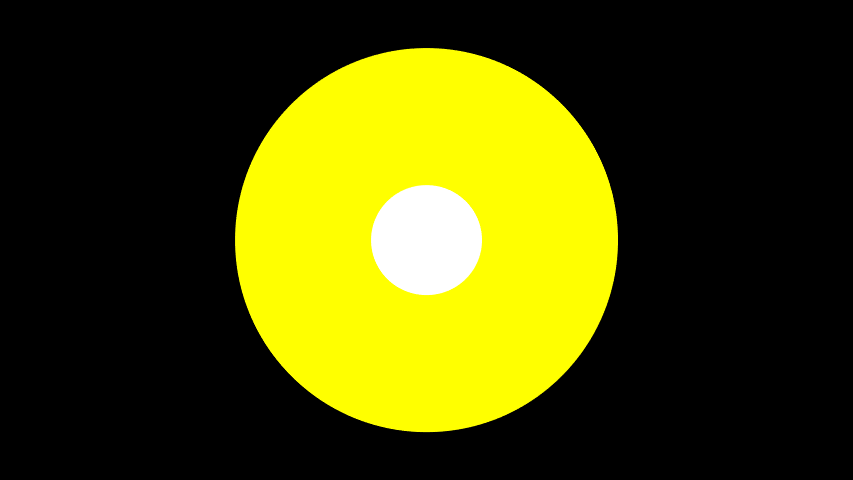
If the Khabs is the supernal triad on the Tree of Life, the Khu is composed of the subsequent seven sephiroth.
With each incarnation, the sephiroth below Binah are recreated anew, following the path of the Flaming Sword. At death, the lower sephiroth are jettisoned, and the essence of the Khabs is completely withdrawn back into the supernal triad.
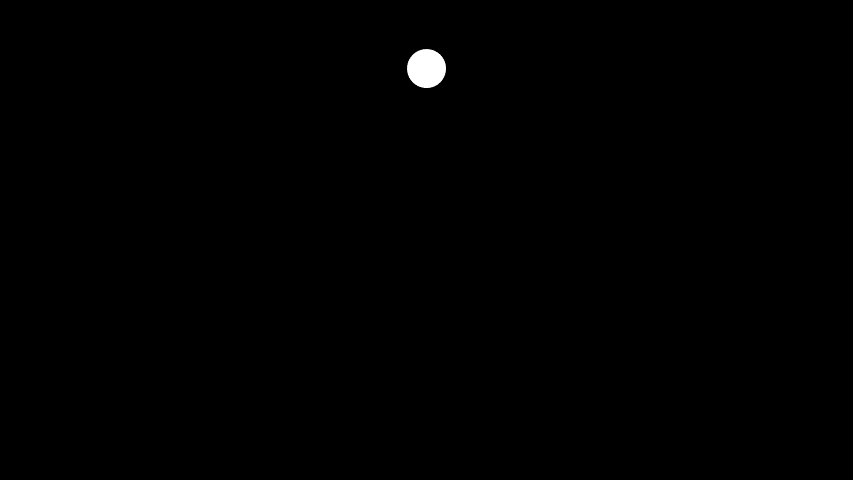
The exception to this is the individual who, through mystical and magical discipline, has opened and strengthened the pathways to their own Khabs.
[T]he Supernal Triad constitutes (or, rather, is an image of) the “eternal” Essence of a man [i.e., his Khabs]; that is, it is the positive expression of that ultimate “Point of View” which is and is not and neither is nor is not etc. Quite indestructible. Now when a man spends his life (a) building up and developing the six Sephiroth of the Ruach so that they cohere closely in proper balance and relation, (b) in forging, developing and maintaining a link of steel between this solid Ruach and that Triad, Death merely means the dropping off of the Nephesch (Malkuth) so that the man takes over his instrument of Mind (Ruach) with him to his next suitably chosen vehicle.Magick without Tears, chapter 38
Appear on the throne of Ra!
AL III.37
Open the ways of the Khu!
Lighten the ways of the Ka!

This is how the magical memory of a star can be built up over a series of incarnations.
This doctrine seems to imply that wisdom is not just passed down through the historical record but can also accumulate in certain stars on the Akashic plane.
Every star is already irreducibly individual and therefore unequal with any other star. But additionally it is also possible certain stars are “great beings” who, for reasons of having built up a magical memory over time, are possessed of extraordinary wisdom.
[C]ertain vast “stars” (or aggregates of experience) may be described as Gods. One of these is in charge of the destinies of this planet for periods of 2,000 years.“Introduction” to the Book of the Law
It’s possible Crowley understood this as the mechanism by which “Secret Chiefs” are created.
It would explain why he used names such as “Aiwass” and “V.V.V.V.V.” both as aspects of himself and as names of separate individuals. “Aleister Crowley” was merely the latest expression or mode (Khu) of an essence (Khabs) of which Aiwass and V.V.V.V.V. were others.
Crowley elaborates on metempsychosis in Liber Aleph, “De Adeptis R. C. Escatologia,” which should be studied closely by initiates of the III° of Mysteria Mystica Maxima.
But it is this continual extension and withdrawal of the Khu—and hence the relations of the Khabs with Nuit—which is visually depicted again and again in the movie.
The Three Feminine Principles in the Mass
Having covered the function of the three Lords in the Mass, I want to now cover the three feminine principles they’re the counterparts of.
The three feminine principles are most conspicuous in the Collects. There’s the Moon in the third Collect, the Lady in the fourth, and the Earth in the sixth.
Each feminine principle is the counterpart of a masculine principle. The Moon is the counterpart of the Sun, the Lady (ostensibly Nuit) is the counterpart of the Secret Lord (Hadit), and the Earth is the counterpart of Chaos (the sole viceregent of the Sun upon the Earth, i.e., the microcosmic counterpart of the macrocosmic Lord in the Universe).
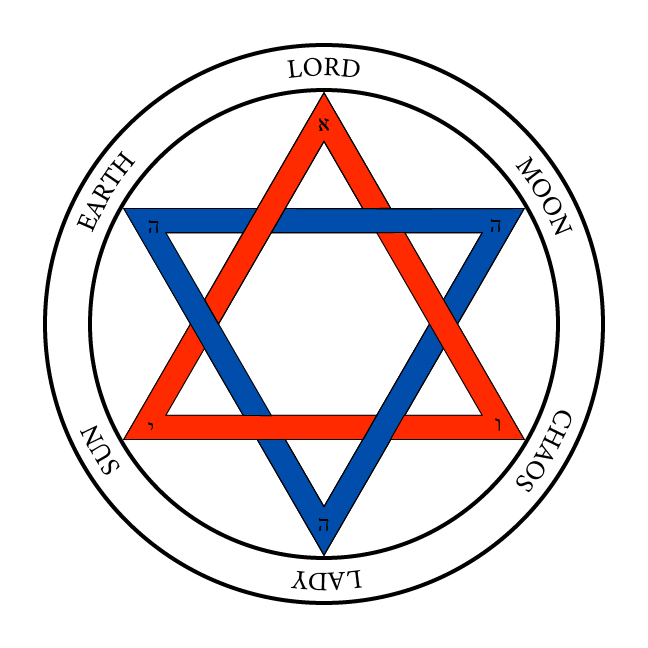
If we assume each of the three feminine principles can be represented by each of the three mother letters of the Hebrew alphabet, then it stands to reason that the Lady (Nuit) is א, mercury, or air; the Earth is מ or salt; and the Moon is ש, sulphur, or blood.
The function of the three feminine principles—which are also the three alchemical principles—is evinced in part III of the Mass, “The Ceremony of the Introit.” In terms of the performance of the ritual, this is actually the first part. It starts when the Deacon admits the congregants and ends with the congregants saying “So mote it be” after the Priestess consecrates the lance and declares the Lord (Chaos) to be present among us.
As I showed in the previous article, the purpose of the Ceremony of the Introit is to invest the Priest with the powers of the three Lords (Hadit, the Sun, and Chaos). In particular, its most important function is to devote the will of the Priest—as represented by his lance—exclusively to the grail of the Priestess. This perfects his will and sets it on a course, the natural terminus of which is its annihilation in the Cup of Babalon. But this process of investing the Priest with these functions and devoting him to the divine feminine is carried out entirely by the Priestess herself, aided by the two Children.
After the recitation of the Creed, the Priestess enters, flanked by the two Children. The first Child enters with the ewer and the salt. Salt is מ which is also the feminine principle of Earth. Then the Priestess (here called the Virgin) enters with the sword and the paten. The sword is א, mercury, or air; the paten is a solar symbol. Then the second Child enters with the censer and perfume, indicating ש, sulphur, or fire/blood.
Facing the congregation and Deacon, the Priestess says, “Greeting of Earth and Heaven!” and all give the Hailing Sign of a Magician, which is a symbol of the sacrament of marriage. She is in a sense declaring the purpose of the ritual, which is the union of the microcosm (earth) with the macrocosm (heaven), which will be carried out by means of the formula of IAO.
The Priestess places the paten on the altar before the graal. She is not in possession of the graal at this time, since she is not performing the function of Babalon. Her first function is mercurial as indicated by the sword (א, alchemical mercury, or air) and the serpentine circumambulations. As has been pointed out, the three and a half circumambulations indicate her identity with kundalini and her power to raise the Priest to his spiritual vocation.
To understand the next part, you need to look at Magick, Part Two, chapter IV, “The Scourge, the Dagger, and the Chain.” That chapter shows that the three alchemical principles as embodied in the three magical weapons are used to prepare the magician for a magical operation. The scourge is ש, sulfur, or fire. It’s used against the body to invigorate the Nephesh, to keep one awake and ardent. The dagger is א, alchemical mercury, or air. It symbolizes alertness and is the ability of the magician to know when he is on task (concentrated) or not. Finally the chain is מ or salt. It represents fixity of attention or mindfulness of the task at hand.
The Lustral Water! Let thy flood
Liber Pyramidos
Cleanse me—lymph, marrow, & blood!
The Scourge, the Dagger & the Chain
Purge body, breast & brain!
The Fire Informing! Let the Oil
Balance, assain, assoil!
Having struck herself with the scourge, let her blood with the dagger, and having put the chain around her neck, the magician would then anoint herself with the Holy Oil (see Magick, Part Two, chapter V). This consecrates the magician to the Great Work.
All of this happens in its own way in the Ceremony of the Introit.
First the Priestess draws her sword and pulls down the veil of the tomb. This is the only part of the ritual where the Priestess uses the sword. She’s using it to free the Priest from his natural condition, as represented by his entombment. As Crowley says in De Lege Libellum, that “which men call life is but a shadow of that true Life, [their] birthright, and the gift of the Law of Thelema.” In other words what we call life is more like death. We “feel little; what is, is balanced by weak joys” (AL I.31). Thelema is a spiritual path which leads us to live perhaps for the first time, but it requires a passage through what appears to most people as a kind of death. This spiritual death—erotic destruction—is what is dramatized in the Mass at the opposite side of the room at the altar. So the tomb and the altar spiritually and spatially balance one another. (See Magick in Theory and Practice, ch VIII, on how objects in a ritual ought to balance one another.)
But the journey begins with discernment. You have to know that there is something else besides the ordinary life in order to pursue the extraordinary one. That is in essence what the Priestess is doing on behalf of the Priest here. She is cutting away the veil of darkness around him and calling him forth to a new spiritual vocation. And of course this being a cultic rite, not a personal journey, his vocation is actually to administer on behalf of a congregation, i.e., “the breathren”.
When he asks how he shall be worthy to take up this vocation, she proceeds to purify him with water and the salt and consecrate him with fire and incense.
As Crowley says in Magick in Theory and Practice, “Purity means singleness.” It means fixing the mind upon the one task which must be accomplished in the magical ceremony. It is represented by the weight of the chain around the neck, which we have already seen is connected with מ (which is also elemental water) or alchemical salt.
As already mentioned, the scourge invigorates the Nephesh or the animal soul. It raises energy or generates ardency for the task. When the Priestess says, “Be the PRIEST fervent of body and soul!” the fire and incense are serving the same function as the scourge.
Then she adorns the Priest with the two mantles. The robe represents his function as Priest of the Sun; the crown represents his function as Priest of the (Secret) Lord Hadit.
At this point we might expect her to anoint him with the Holy Oil, thus signifying his readiness to unite the higher in himself with the lower. That’s not what she does, though. Instead she kneels and strokes the lance eleven times, thereby consecrating it to the Lord Adored (Chaos).
What I take from this is that the natural will thus perfected—i.e., devoted exclusively to Nuit—just is the higher part of the individual now ready to do the work of union or sacred marriage.
In other words, it’s not quite correct that the sex instinct is the Holy Guardian Angel. The sex instinct properly oriented and devoted to heaven is the means by which union with the divine will occur. A will thus perfected must inevitably cross the Abyss, thus annihilating itself and becoming its feminine opposite in the Mother Babalon.
In other words, the Priestess—who is “actually Virgo Intacta or specially dedicated to the service of the Great Order”—has now made the Priest like her through the Ceremony of the Introit. She has made him “virgin” or “chaste” unto the Lord. His sex instinct or natural will is now devoted exclusively to the most high and has thus been perfected.
Having accomplished that, the Ceremony of the Introit ends, and the Ceremony of the Opening of the Veil commences. Now their roles change. The Priestess is no longer the primary agent in the ritual; the Priest is. Taking her by the hand, he raises her. He now refers to her as “Virgin pure without spot”. Her function is no longer alchemical mercury. She is now ה final of the formula Tetragrammaton. He is no longer a natural man but now functions as ו of Tetragrammaton. Thus he seats her upon the altar, which we know from its crimson altar cloth is representative of Binah or the Throne of the Mother. She now represents Babalon, and the rest of the ritual is about how he will go about pouring all he is into her cup, thereby undergoing destruction in erotic union with her.
The Unity of the Three Lords
As I showed yesterday, there are three Lords mentioned in Liber XV: the one secret and ineffable Lord of the Creed (aka the Lord secret and most holy of the 2nd Collect), the Sun (the one Star in the Company of Stars of the Creed aka the Lord visible and sensible of the 1st Collect), and CHAOS (the sole viceregent of the Sun upon the Earth of the Creed and the Lord of Life and Joy who we adore in the 5th Collect). But these aren’t three completely separate individuals. They’re actually one Lord with three aspects or faces.
I am Heaven, and there is no other God than me, and my lord Hadit.
Liber AL vel Legis, I.21
The first Lord—the one secret and ineffable Lord mentioned in the Creed and the 2nd Collect—is Hadit. Hadit is the point of view or subjectivity of each individual. It is Hadit’s union with Nuit—space and matter—which gives rise to the manifest universe, the observable universe, the experiential universe, etc. This is covered in Crowley’s Introduction to the Book of the Law.
In any experience you may have, Hadit is always that to which the experienced event occurs, never the thing experienced itself. From this, two truths immediately follow. (1) Hadit has no nature of his own (since nature is always something experienced (see Djeridensis Comment on AL II.2)); and (2) one cannot even experience let alone worship Hadit. (See New Comment to AL II.8.)
From this we may infer that (3) the first 14 lines of the Anthem are directed at Hadit (ill, presumably, because Hadit is the one delivering the lines).
From the Anthem we also learn that Hadit is the “centre and secret of the Sun”. The Sun is the second Lord (the one star of the Creed and the Lord visible and sensible of the first Collect). We also learn from the Priest’s veil speech that the Sun is “our Lord in the Universe,” i.e., the macrocosmic deity. In the context of the Mass, the Sun represents both what people have in mind when they casually think of God (i.e., the Lord of the Universe) and also the literal Sun which impacts the Earth with electromagnetic energy.
What we’re being told in the Mass is that the essence of the Sun—basically the essence of God—is identical with the essence of ourselves. That elusive subjective viewpoint within yourself which you can never quite grasp or get to the bottom of—which always manages to slip away when you turn to look at it—is actually the essence of divinity.
Now the Sun also serves other purposes in the Mass. It is also a principle of unification, a principle of sacrifice, and a principle of resurrection. But all of these are tied together in the single magical act toward which the Mass aims. That magical act is apparently one of self-sacrifice. The Priest offers his life/body and joy/blood to the Sun. What he is in essence proclaiming, performing, and realizing is that these things are not Hadit. They belong to Nuit. By giving up all that he is, was, or could be to the Lord of the Universe, he is in a certain sense annihilating himself. But at the same time, he is becoming Hadit. (See AL II.6.) He is undergoing spiritual death (within this incarnation) in order to realize who he truly is. So his act of self-sacrifice is a unification (seeing everything as part of one unified whole in Nuit) which is also a spiritual resurrection (thus fulfilling the formula of IAO, which is just another name of the Sun).
This is complex, but if you grasp this, you grasp Thelema.
Now how does our third Lord, Chaos, come in to this?
The simplest way to understand this in the context of the Mass is that Chaos is the drive within each of us toward union with Nuit. It is the Hadit within us but manifested as a drive toward completion, wholeness, and annihilation through self-sacrifice.
Chaos is the drive toward erotic liberation. It’s the unity of sex and death.
This is why when the Priest offers up his body/life and blood/joy to the Sun, he says, “Let this offering be borne upon the waves of Æthyr to our Lord and Father the Sun that travelleth over the Heavens in his name ON.”
ON is ענ. Ayin and Nun are two of the paths going up the Tree of Life into Tiphareth, the House of the Sun. Ayin is the Devil, the goat, the phallus, the perfected will. It’s life and joy on Earth, in this incarnation. Nun is Death. Both paths terminate in the Sun, the principle of unification and resurrection. Ayin (70) plus Nun (50) is 120, a number associated with resurrection in the Golden Dawn Adeptus Minor ritual. But let’s translate this out of occult-ese into something real.
What we think of as God (call it the Sun or Jehovah or Allah or whatever you want) is really something within each of us which we in some sense project on to reality or on to a transcendent author of the universe. If God in the exoteric sense really exists, His essence is Hadit, the same as our own essence, which is our subjective point of view. So God is really within us.
The reason we don’t realize we are God is because we are confused about ourselves. We identify with our bodies, our minds, our emotions, our thoughts, our plans, our wishes, our desires, our personalities, our tendencies, etc. All these things we think are us, are ours, are I/me/mine are nothing of the sort. They are actually all Nuit. (Technically, they’re the Khu.) One of the most important ways in which we can realize our own divinity is by giving all those things back to her: by sacrificing all that we think we are to Nuit. (See AL I.65 and also The Wake World.)
This sounds like we’re creating a duality or an opposition between self and other. It sounds like we’re rejecting all these things we think of as self. But that’s only apparent. Just stop and think about it for second. What does it take for you to give your body back to Nuit? Isn’t your body already in space? Aren’t your thoughts already occurring in an awareness which is space-like? Can you possibly notice your body without also noticing space? Can you possibly notice your thoughts and feelings without also noticing awareness?
Now look at it from the other side. Hadit doesn’t have any nature or any being, so there is nothing to oppose to Nuit. Hadit is just (unreflective, “foolish”) going. In an experience of something seen, there is the thing seen (Nuit), and there is the act of seeing (Hadit). In an experience of something thought, there is the thing thought (Nuit), and there is the thinking (Hadit). The confusion comes with thinking that the thing seen or thought is us. We confuse ourselves with our thoughts.
There’s a Zen saying to the effect of, “In the seeing only the seen, in the hearing only the heard,” etc. That’s very apropos here.
The idea of erotic liberation is that, deep down, the Hadit in us wants nothing more than union with Nuit. It doesn’t want union with this or that part of her. It wants union with her, with everything. It doesn’t care about the particulars. Anything that arises for it is as good as anything else. (AL I.22) It wants to fuck the universe.
That innate drive to fuck the universe manifests itself as the sex principle in a religious or spiritual context. It’s the original nature worship. Those who realize this belong to the “true church of old time”. They understand that apotheosis or liberation depends upon self-transcendence. It requires self-abandonment. It requires an act of love so powerful, an ecstacy so intense, that it completely and permanently obliterates the sense of separateness from life and joy.
The Saints are those who “got it”. They destroyed themselves through erotic destruction and as a result got to really, truly live.
Let’s hit it from another angle: the phallus (Chaos) is the natural being or natural will perfected. By “natural will” I just mean your desire: what you want.
Thelemites are fond of saying “I will this” and “I will that”. That might be your natural will, but it’s not your true will. It can’t be, because it’s confused with some particular outcome, some particular aspect of Nuit. It’s not your pure or perfected will. It’s not Hadit. What’s the perfected or pure will? The Book of the Law tells us.
For pure will, unassuaged of purpose, delivered from the lust of result, is every way perfect.
AL I.44
At the same time, the perfected will and the natural will are not separate! It’s not like you have two wills. You can think you have two wills, but that’s where suffering comes from. You have one will, but it has to be perfected through a training, through a process. That process culminates in the destruction of the separateness of that will.
Will itself must be ready to culminate in the surrender of that Will; the aspiration’s arrow that is shot against the Holy Dove must transmute itself into the Wondering Virgin that receives in her womb the quickening fire of that same Spirit of God.
Magick in Theory and Practice, Chapter VIII
Notice in this passage that the will (which is masculine), upon becoming perfect, is on a trajectory which ends with it becoming female. It’s becoming “virgin” and chaste. We’ll come back to this.
This is what’s involved in the formula of ON. The O or Ayin is the perfected will. It is the will that aims at its one, true object, and therefore it wills death (N or Nun) on to itself. It is the destruction of the sense of separateness (the sense that I am imposing my will on reality from some position that transcends the universe). True will is not free will in the sense of me getting to choose this or that path. It’s the opposite. This destruction occurs through an act of erotic union with Nuit. The person who has accomplished this becomes God. They are a deified individual, the symbol of which is—again—the Sun.
Again, pretty complex, but if you get this, you get how the Mass works.
But as I said, everything depends upon the training, the process, which is really a process of learning how to aim properly.
So was it—ever the same! I have aimed at the peeled wand of my God, and I have hit; yea, I have hit.
Liber 65, I.65
The natural will becomes perfected (becomes Chaos or God in the Flesh) when it is oriented and devoted exclusively to the proper object. This is what in Thelema is called chastity. (See Little Essays Toward Truth, “Chastity,” Energized Enthusiasm (sec VI), and Magick in Theory and Practice, chapter XX, and of course AL I.52. The doctrine of chastity—which comes from the Book of the Law—is the foundation of Crowley’s sexual mysticism.)
The Priest becoming chaste is dramatized in the Ceremony of the Introit. In that ceremony, the Priestess (who, with the Children, represents the three feminine principles which balance the three Lords spoken of here) adorns the Priest with two mantles and consecrates a third.
First she robes the Priest with the robe of scarlet and gold. This robe signifies him as the Priest of the Sun, the second Lord. It means that his work in this ritual, among other things, is one of unifying, of becoming One, of “doing the Lord’s work” so to speak.
Then she places the cap of maintenance and the Uraeus crown on his head. This represents the first Lord, the Lord secret and most holy, etc., Hadit.
Finally she kneels, runs her hands gently up and down the lance eleven times, and says “Be the LORD present among us!”
That’s the third Lord, the Lord adored upon heaths and in woods, etc., Chaos. That’s the natural will of the individual which is now perfected through devotion to Nuit. We know it’s the natural will, because the Priest comes out of the tomb with it! Unlike the robe and crown, it’s on his person. It’s a natural birthright, not something bestowed upon him.
It becomes “perfected” by being devoted solely to Nuit, which is symbolized by it being stroked 11 times. (See AL I.60.) As soon as this is accomplished, the Priestess says, “Be the LORD present among us!” All give the Hailing Sign which symbolizes marriage. Why? Because the Priest is now a committed man. That devotion of his sexual energy exclusively to the All is what makes him chaste, and it is what identifies his will or his sexual potency with Chaos, the Lord Adored. And if you had any doubt about this, the Priest is nice enough to let you know what just happened:
Thee therefore whom we adore we also invoke. By the power of the lifted Lance!
Now he’s going to take that lance—representative of his perfected will—and he’s going to put it in the only place it can ever possibly go ever again: the grail. That lance (O or Ayin) is now on a one-way trip to death (N or Nun). The Priest’s will must come to an end through an act of love which unbinds (nibbana) his sense of separateness from nature. He must inevitably undergo erotic destruction.
There’s a lot here, but that’s how the three Lords fit together, and how that doctrine fits into the Mass and into Thelema generally. The Ceremony of the Introit in particular is very important for establishing the relationship of the three Lords in the person of the Priest and setting him on his trajectory. There are also three feminine principles at play here. If you have three masculine principles, you must have three feminine principles as well.
If you do anything in the North, you must put something equal and opposite to it in the South […] It is not safe to use any thought in Magick, unless that thought has been thus equilibrated and destroyed.
Magick in Theory and Practice, chapter VIII
Maybe I can go into that in a subsequent post if anyone is interested.
Thelema’s highest good
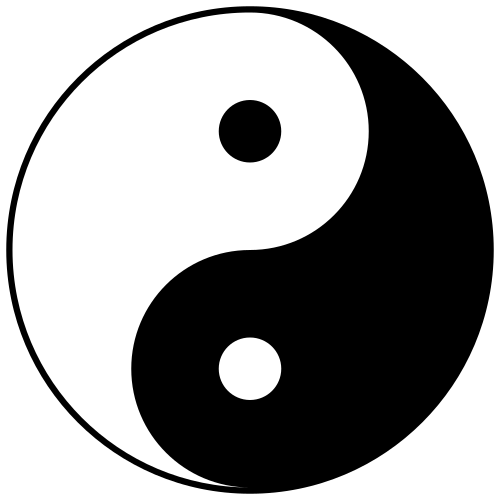
But to love me is better than all things.
Like everything else in Thelema, its highest aim is 2-in-1.
It’s doing your will—without lust of result.
It should now be perfectly simple for everybody to understand the Message of the Master Therion.
Liber II, The Message of the Master Therion
Thou must (1) Find out what is thy Will. (2) Do that Will with (a) one-pointedness, (b) detachment, (c) peace.
Then, and then only, art thou in harmony with the Movement of Things, thy will part of, and therefore equal to, the Will of God. And since the will is but the dynamic aspect of the self, and since two different selves could not possess identical wills; then, if thy will be God’s will, Thou art That.
There is doing or going, then there’s unadulterated openness and acceptance of whatever comes from that without a shred of resentment.
The two are in perfect balance and identity at the point of the triangle.
Another way of looking at it is that each of us is individual and has their own, individual will, thus their own particular course or path through eternity.
Equally and at the same time, though, there is only one aim that the Hadit in us has, and that’s union with Nuit. But Nuit is not a thing, and therefore Hadit’s hunger for Her can never be satisfied. He is never united with Her but is constantly uniting with Her, realizing one latent possibility within Her after another after another after another.
In other words the going is not toward a particular aim; it is toward All.
And the going is not of a particular entity; rather, substance passes over completely and without remainder into change or love, never stopping for even a moment just to be.
The path leading to this realization—where the individual is reconciled with the universe, where freedom is reconciled with necessity—is the spiritual system of Thelema, which can be described as magick or love under will.
Each action or motion is an act of love, the uniting with one or another part of “Nuit”; each such act must be “under will,” chosen so as to fulfil and not to thwart the true nature of the being concerned.
“Introduction” to the Book of the Law
The technical methods of achieving this are to be studied in Magick, or acquired by personal instruction from the Master Therion and his appointed assistants.
The method of Magick in this—and in all—Work is: “love under will.”
Djeridensis Comment on AL I.55-56
Technically, any practice or belief leading to this outcome could be considered “Thelemic,” whether Crowley thought of it or not.
Here is one such exercise. Right now, right at this moment, does it seem to you as though things could be other than exactly as they are? How do you know that? Can you prove that to yourself? Try, and take note of what happens.
But any exercise that is not leading toward that end—pure doing + pure indifference—is a desire for the conditioned. It’s the subordination of will to love or what Crowley called black magick.
It doesn’t mean it’s “evil”. From a conventional point of view, it’s usually considered quite good, actually (i.e., harmless). It just leads where all desire for conditioned things leads: dissatisfaction and resentment toward existence.
